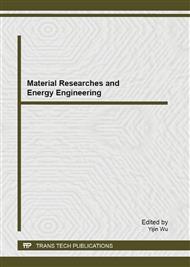p.681
p.688
p.693
p.699
p.705
p.711
p.716
p.720
p.725
The Optimization Model of Wind Power and Thermal Power Jointly Run under the TOU Price
Abstract:
In order to be able to absorb the abandoned wind, increasing wind-connect amount, the paper study the way of wind power, thermal power joint run and puts forward wind power, thermal power joint run optimization model based on the energy-saving generation dispatching way under the environment of TOU price and the target of minimizing the cost of coal-fired cost, unit commitment and pollution emissions. The numerical example finds, the TOU price can realize the goal of peak load shifting, increasing the electricity demand in the low load and reducing electricity demand in the peak load. The model can increase the amount of wind-connect grid, absorb the abandoned wind, reduce the use of coal-fired units under the environment, increase the average electricity sales price and profit of Power Company. Therefore, the model has significant economical environmental benefits
Info:
Periodical:
Pages:
705-710
Citation:
Online since:
September 2013
Authors:
Price:
Сopyright:
© 2013 Trans Tech Publications Ltd. All Rights Reserved
Share:
Citation:


